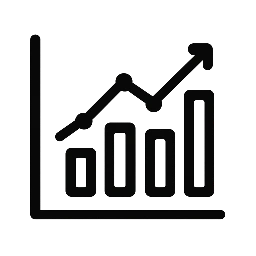Artificial intelligence (AI) is revolutionizing the way individuals and institutions approach trading. By leveraging AI, traders can analyze vast amounts of data, identify patterns, and automate decision-making processes with unparalleled accuracy. If you’re interested in starting trading using AI, here’s a step-by-step guide to help you get started:
1. Understand the Basics of AI and Trading
Before diving into AI-driven trading, familiarize yourself with:
- Key AI concepts like machine learning, neural networks, and data processing.
- Different types of trading strategies (e.g., day trading, swing trading, algorithmic trading).
- Financial markets and asset classes (stocks, forex, cryptocurrencies, etc.).
2. Define Your Trading Goals
Clearly outline what you want to achieve with AI trading. Consider:
- Your risk tolerance and investment capital.
- Preferred trading style (short-term, long-term, automated, etc.).
- Targeted markets or assets.
3. Choose the Right Tools and Platforms
AI trading requires specialized tools and platforms. Look for:
- AI Trading Platforms: Platforms like MetaTrader, QuantConnect, or Trade Ideas that integrate AI capabilities.
- Programming Languages: Python, R, or C++ for building custom AI models.
- Cloud Services: AWS, Google Cloud, or Microsoft Azure for hosting and scaling models.
- Data Providers: Reliable sources for historical and real-time market data.
4. Learn How to Build or Use AI Models
AI in trading often involves predictive modeling and algorithm development. You can:
- Use Pre-Built Models: Many platforms provide ready-to-use AI algorithms.
- Develop Your Own Models: Learn to code and use machine learning libraries like TensorFlow, Keras, or PyTorch to create custom trading algorithms.
- Focus on supervised learning techniques for price prediction or reinforcement learning for strategy optimization.
5. Collect and Analyze Data
AI thrives on data, so gather large datasets for training and testing your models. Use:
- Historical price data.
- News sentiment analysis.
- Technical indicators and market metrics.
Ensure the data is clean and free of errors to improve the reliability of your AI model.
6. Backtest Your Strategy
Test your AI algorithm using historical data before applying it in live markets:
- Use backtesting tools to simulate trades and evaluate performance.
- Optimize your model based on backtesting results to reduce errors and improve profitability.
7. Monitor and Adjust Your AI Trading SystemAI models need regular updates to remain effective in changing market conditions:
- Continuously feed new data to your model.
- Monitor performance and recalibrate strategies as needed.
- Avoid overfitting, where the model performs well on historical data but fails in live markets.
8. Start Small and Scale Gradually
When you’re ready to go live:
- Begin with a small investment to minimize risks.
- Use demo accounts or paper trading to practice before committing real funds.
- Gradually scale up your trading as you gain confidence in your AI system.
9. Stay Updated on Trends and Regulations
AI and trading technologies are constantly evolving. Keep yourself informed about:
- New tools and techniques in AI and data science.
- Regulatory changes in financial markets.
- Emerging trends like sentiment analysis, alternative data, and quantum computing.
10. Understand the Risks
AI trading is not foolproof and comes with risks such as:
- Market unpredictability and volatility.
- Over-reliance on algorithms.
- Technical issues or software bugs.
Always have risk management strategies in place, like stop-loss orders and portfolio diversification.
By following these steps, you can harness the power of artificial intelligence to improve your trading performance and make more informed decisions. Remember, while AI can enhance your strategies, success ultimately depends on consistent learning, discipline, and adapting to market conditions.
